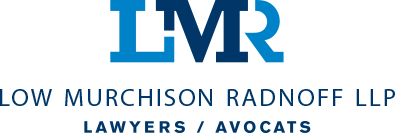Making an Offer to Settle: The Costs Consequences of Rule 49

Topic: Civil Litigation November 10, 2016 by Tess Brown
By: Tess Brown, B.Soc.Sc., J.D. – Litigation Lawyer, Low Murchison Radnoff LLP
Email: tbrown@lmrlawyers.com
Litigating a civil dispute in the Ontario Superior Court of Justice can be a very long process: it often takes years to reach trial. Did you know, however, that in Ottawa, a significant majority of all civil actions will settle before they ever reach trial? In fact, there are many opportunities for settlement throughout the litigation process, including mediation, pre-trial, and the exchange of settlement offers.
Why Make a Settlement Offer?
One reason a party might choose to make a settlement offer would be simply to resolve the dispute on terms that are acceptable to all, without the requirement of a trial. However, this is not the only possible reason. Settlement offers are also often used to create a strategic and financial advantage for a party whose matter is proceeding to trial. To this end, Rule 49 of the Rules of Civil Procedure provides a framework for the making of settlement offers which can potentially secure a better costs award that could otherwise be obtained at trial.
Costs Consequences of Rule 49
The purpose of Rule 49 is to encourage settlement. In order to further that objective, Rule 49 provides the potential for an increased costs award for a party making an offer to settle if that party “beats” the offer at trial by obtaining an equally favourable or more favourable assessment of their costs by the trial judge.
Practically speaking, the implications of Rule 49 are slightly different, depending on if it is a Plaintiff or a Defendant making the settlement offer. In the case of a Plaintiff, where the Plaintiff makes an offer to settle and where the judgment ultimately obtained is as or more favourable than said offer, the Plaintiff will be entitled to costs on a partial indemnity basis (usually around 60% – 65% of the total legal fees and reasonable disbursements incurred) to the date on which the offer was made, in addition to costs on a substantial indemnity basis (usually around 90% of the total legal fees and reasonable disbursements incurred) thereafter. In the case of a Defendant, however, where the Defendant makes an offer to settle and where the judgment ultimately obtained is as or less favourable than said offer, the Plaintiff will be entitled to partial indemnity costs to the date of the offer, and the Defendant will be entitled to partial indemnity costs thereafter.
Rule 49 Framework
Rule 49 provides that a “party to a proceeding may serve on any other party an offer to settle any one or more of the claims in the proceeding on the terms specified in the offer to settle”. Though an offer can be made at any time, in order to potentially trigger adverse costs consequences, an offer must be made at least seven days before the commencement of a trial. Additionally, the offer must remain open to acceptance until the commencement of the hearing.
It is also important that the offer to settle be made in writing. Though a form is provided under the Rules of Civil Procedure for making offers to settle, the court has held that content prevails over form. As a result, an offer communicated in correspondence between counsel will generally be sufficient to trigger the aforementioned adverse costs consequences, so long as said communication is made in writing and meets all of the criteria set out in Rule 49 and related case law.
There are many other intricacies related to the making of an offer to settle under Rule 49, besides those covered in this article. If you require assistance in litigating a civil dispute, the lawyers in LMR’s Litigation Group can assist you.
[ssba]





